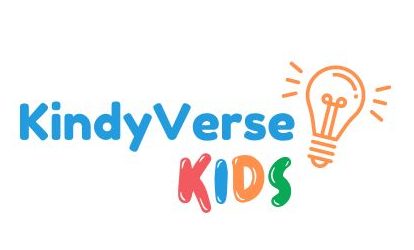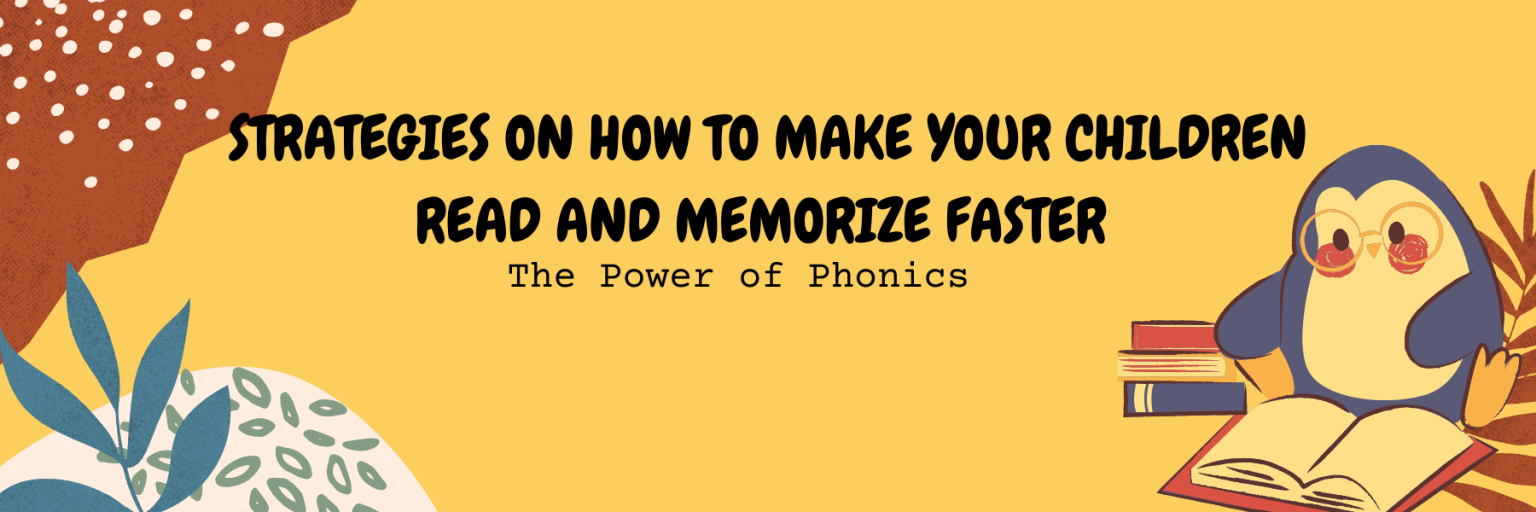
STRATEGIES ON HOW TO MAKE YOUR CHILDREN READ AND MEMORIZE FASTER
| The Power of Phonics
Ever wonder what should a kid learn first? Or, ever wonder what to teach a kid first? Ever heard of phonics? Here’s how to make your children read and memorize faster with phonics.
7 Things You’ll Learn After Reading This Article:
-
- What is Phonics, 4 Types of Phonics, and Phonological Awareness
- What Makes Phonics Important for Early Childhood Education?
- What Do Parents Need to Know About Phonics?
- Phonics for Early Childhood Education
- How to Make Your Children Learn to Read?
- How to Make Your Children Read: Introducing Phonics to a Two-Year-Old.
- How to Make Your Children Read: Introducing Phonics to a Four-Year-Old at Home.
- What are the 44 Phonics/English Sounds?
- How Can I teach Phonics Online?
- How does Phonics differ from Phonemic Awareness?
Introduction
A child is born with a tabula rasa. A clean slate, a new beginning, meant for change and be molded by perceptions and life experience. Their brain knows nothing but to express their expressions such as joy, sadness, interest, excitement, and anger before learning how to say their first word. And it is amazing that even with the lack of linguistic ability, they are already blessed and capable of being social and cognitive. As they age, they learn inch by inch, and it is all based on their experience and intuition. This is also how they come to recognize and learn the kinds of stuff they always see, hear, smell, feel and taste. Indeed, the 5 senses (or 6 because of intuition) are vital for a child to learn effectively. Sooner or later, as they start to recognize and understand the usual things, they develop language skills as they are bound to learn and use for the rest of their life.
What is Phonics?

Phonics is a method of teaching children to read and write where the letters and sounds are in a relationship. Basically, most parents or teachers teach phonics by correlating sounds to a letter or group of letters so, in this way, the children or the student understands and recognizes the word or the subject. Take this example of phonics in the images below:
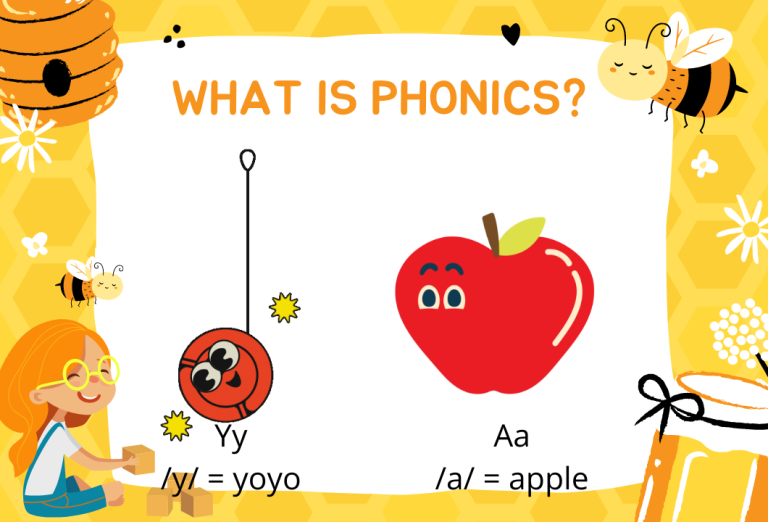
Children can easily remember names or labels upon hearing the sound and seeing the picture or the physical object. Take, for example, the image at the top-left; children will learn that the letter Y has a similar sound /y/ from a toy with a round body controlled by a thread, Yoyo; while the image at the top-right, we can see the letter Z and that /z/ is for the animal that lives in Safari, Zebra.
Now, the phonics definition is explained. It’s time to level up your understanding of phonics. The following are the 2 programs of phonics instruction. Make sure to take note of this!
Programs of Phonics Instruction
Before we explain the types of phonics instruction, knowing about programs of phonics instruction is like a pre-requisite since these programs will be the basis of how phonics will be taught to the beginning readers.
Explicit/Systematic Phonics Instruction
The explicit or systematic phonics instruction is for the beginning readers to experience a step-by-step procedure learning how to read and write the words. In this program, beginning readers are taught from the very basic or introduction on how to learn to read or recognize phonics up to the point they are able to decode words.
In terms of spelling or sounds, the explicit program taught the beginning readers direct and detailed instructions. For example, the letter A is taught to the student what it sounds like and it is /a/ then teaches phonemes with the same sound and other unit instructions to get familiarized with the letter or word until the reader can decode it.
Implicit/Incidental Phonics Instruction
This program does not have a clear structure or procedure on how phonics is taught. Based on its name Incidental or Implicit, its approach is based on reading the whole word first and then breaking apart to identify the word from what unit of instruction is present. In this instruction, the beginning readers are not actually taught how to read and clearly not to develop skills but to gain information or experience through reading storybooks.
Six Types of Phonics Instruction
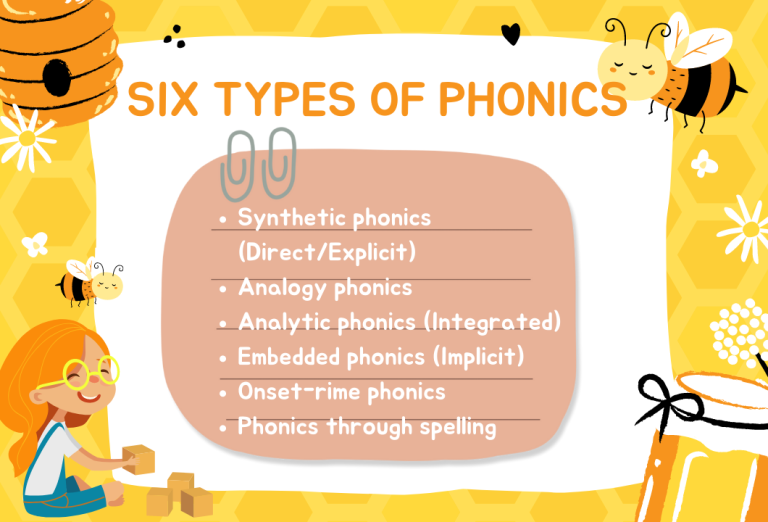
Synthetic phonics (Direct/Explicit)
The synthetic phonics approach is systematic, direct, and explicit. Converting letters to sounds (phonemes) and then blending the sounds to form recognizable words is a process that students must learn explicitly. In the synthetic phonics approach, the beginning readers are being taught to read the 44 sounds or the phonemes first then making them try to write the word.
Let’s try to make step-by-step instructions on how to read a word in the synthetic phonics approach and try to apply our basic knowledge of it based on how we had defined it.
Analogy phonics
By comparing unfamiliar words to well-known ones, you can teach students unfamiliar words (e.g., recognizing that the rime segment of an unfamiliar word is identical to that of a familiar word, and then blending the known rime with the new word onset, such as reading trick by recognizing that -ick is contained in the known word pick, or reading stump by analogy to bump).
Take, for example, the following words are based on the known word and then the rest are the words with the same analogy of the word.
| -ike | -ide |
|---|---|
| Bike | Ride |
| Mike | Bide |
| Like | Side |
| Dike | Tide |
| Hike | Wide |
Analytic phonics (Integrated)
To avoid pronouncing sounds in isolation, analytic phonics teaches students to analyze letter-sound relationships in previously learned words. The analytic phonics approach requires knowledge of the English alphabet and the sounds to be able to read words. It also has reading strategies like initial consonant blends, final consonant blends, vowel and consonant digraphs, and silent letters or ‘e’ as it is commonly used. Usually, it is more on guessing the next word after reading or analyzing. Here, we have a list of words with the same starting letter words and the same final letter words and other strategies mentioned earlier.
| Same Middle Sound Words (a) | Same Final Sound Words (p) | Initial Consonant Blends (bl) | Final Consonant Blends (st) | Final Consonant Blends (st) | Silent ‘e’ |
|---|---|---|---|---|---|
| Mat | Dip | Bleed | Moist | Hoop | Blue |
| Pat | Sip | Blossom | Most | Mood | Sue |
| Hag | Lip | Bliss | Toast | Sooth | Shake |
| Mad | Map | Blurt | Host | Root | Rue |
To make things clearer, the analytic phonics approach looks at the whole world as a level to be analyzed and coined as “a new approach to teaching spelling” because, in order to learn the word, it breaks the words into parts.
Embedded phonics (Implicit)
Teaching the students’ phonic skills through the incorporation of phonics instruction into text reading is a more implicit approach that makes use of incidental learning to some extent. The embedded phonics approach is for informational purposes and not actually for skills development. In implicit phonics, phonemes are not pronounced in isolation and do not include strategies for the beginning readers to use on new or unknown words they encounter. In embedded phonics, the teacher or parent begins reading stories or texts before they identify and teach the relevant parts. They begin to learn words and how to decode while listening or reading together with the teacher or parents. There are no step-by-step instructions, and it is taught incidentally during reading sessions so there is a possibility of missing important parts
Onset-rime phonics
In this subtype of analogy phonics, instruction focuses on a high-utility phonogram or ‘rime’ families such as -at (bat, cat, fat, pat, etc.) and -an (can, man, fan, tan, plan, etc.). It helps the student to learn about word families, better for future learning and spelling strategies.
| Word | Onset | Rime |
|---|---|---|
| Pan | P | an |
| Pet | P | et |
| Tin | T | in |
| Bed | B | ed |
| Bat | B | at |
| Twig | tw | ig |
Phonics through spelling
Children learn to segment words into phonemes and to make words by writing letters for each phoneme.
| Spellings | Words |
|---|---|
| /ee/ | Free, Deep, Feel, Bleed |
| /ea/ | Each, Weak, Lead, Leave, Dream |
| /at/ | Fat, Cat, Bat, Pat, Rat |
What Makes Phonics Important for Early Childhood Education?
Phonics is the beginning of a ‘child’s learning to read’ process. Adults naturally teach the young by reading words together or the “say after me” method. Eventually, in the long run, a child will recognize and will be able to work on images or objects and can understand how to make them. Let’s say that your child can now speak words or recognize words and work with them, and their next step is to get better development to get further comprehension about speech or communicating. That’s where Phonological awareness came in – the first step in learning and a foundation of reading.
However, phonological awareness is different from phonics. Phonological awareness, in general, means being able to recognize words and having the ability to work with words and sounds. At the same time, phonics is a method of teaching people to read by correlating the sounds with letters or even a group of letters. It looks familiar, right? But they are not in terms of their approach.
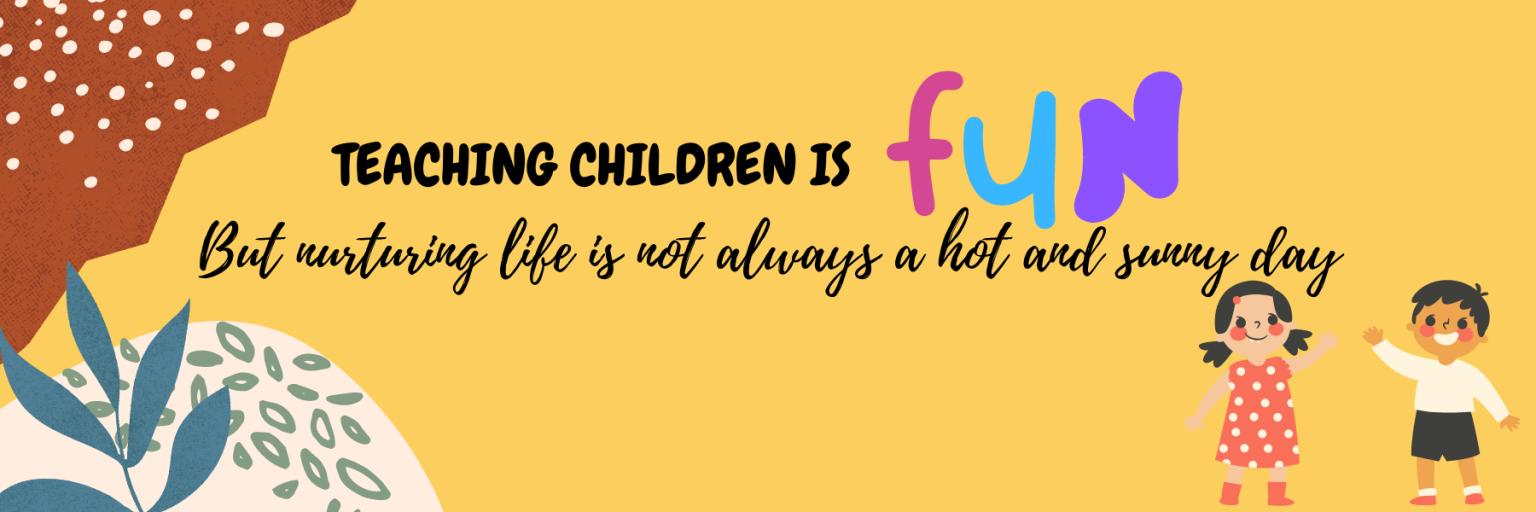
What Parents and Teachers Need to Know About Phonics?
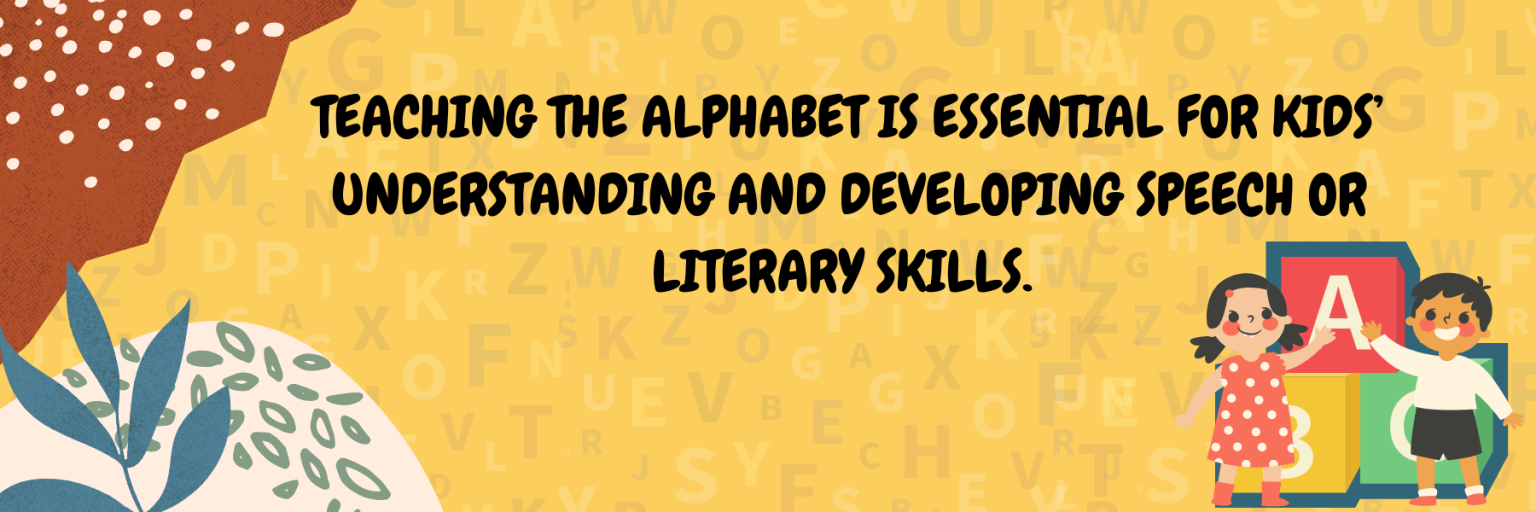
Teaching the alphabet is essential for kids’ understanding and developing speech or literary skills. Getting familiar with the words and pronouncing them correctly is vital for a child’s learning to read and write. This thought is essentially relevant in teaching phonics.
Most parents teach their children the conventional way of learning the English alphabet, just like A for Apple, B for Ball, C for Cat, and D for Dog. This style of teaching has proven effective up to this day because it uses natural objects or subjects often seen at home. It is always easy to retain information when we can encounter these objects or issues as often as possible.
For example, a bowl of fruits with apples is basically on top of the dinner table or a ball inside a kid’s room or backyard. A cat beside the window just hanging, staring at anything intently, or a dog outside sniffing and digging something in the pile of dirt.
The list is long. Completing the English alphabet with examples will be as easy as pie!
It always takes time to let the information sink in for a child who is just starting to learn literature. Teaching a topic to a child between 3 to 6-years-old is not something one can do in one sitting.
It could take days, depending on their pace and how you manage to make them study. Most of the time, you have to make a fun and creative way of learning for your child. Since their patience or attention span is very short, the struggle of making them focus is next to impossible.
The best solution to this struggle is by giving a reward for their hard work.
Phonics Lesson Planning

Teaching phonics is not something that can be done with specific people or places. Anyone can teach phonics as long as they have a better understanding of the subject and enough materials to make learning fun and creative. Since teaching kids requires a lot of work and patience, anyone who would like to teach phonics, specifically the parents and teachers, must present a variety of shows and activities to keep up with the children’s patience while keeping them happy and in progressive learning at the end of the day.
Since it requires a lot of effort to actually make a lesson plan about phonics, here is the following outline to follow to make fun ways to learn phonics.
-
- Phonemic Awareness Warm‐Up
- Introduction/Review of Sound/Spelling
- Blending and Word Work
- Decodable Text
- Dictation
Phonemic awareness warm-up
is more like making interaction and making the students remember words or phonics through oral drills or something spontaneous quiz that could trigger their brains to think actively or fast.
Sample activities you can do during this first part of teaching are the following:
-
- Rhyming words
- Say it Fast
- Tap it Out
Introduction/Review of Sound/Spelling
is a good next step in teaching a phonics class. After you have refreshed your students’ brains and get them to be bright-eyed and bushy-tailed, for starters.
The following instructions will step up their game in learning phonics:
-
- Beginning Sounds
- Same and Different
- Letter Sounds
Blending and Word Work
is a good learning activity for beginning readers to enhance their recognition of sounds and letters. Blending mostly focuses on getting familiar with the sounds of the letters to make a new sound until the reader is able to read the whole word while Word Work still functions with recognizing the sounds of a letter or a group of letters, it also focuses mostly on word construction and the uses of the letter extensions learning activities.
The following is a list of topics to teach phonics to advance:
-
- Sounding Out Words
- Recognizing Constant
- Recognizing Vowels
- Short and Long Vowel Sounds
- Short and Long Rhyming Sounds
- Consonant Digraphs
- Two Vowels Together
- Long Vowel – Silent E
- Outlaw Word Families
- R-controlled Vowels
- Diphthongs
- Contractions
- Plurals
- Possessives
- Irregular Spellings
- C-H Word
- Homophones
- Suffix t-i-o-n and variants
Decodable Texts
is like an assessment of the beginning readers about what they have done or learned in learning phonics for a while. The decodable text’s structure consists of phonetic codes and illustrations that give additional ideas to support the text. The purpose is to give more practice to distinct phonics patterns. A student will be given a text with sequential order of instructions to work on progressively until the student is able to effortlessly work on activities or decoding words.
Dictation
is also known as sound-spelling. Dictation is an instruction given by the teacher orally to be transcribed by the student. It’s also a great way to assess the students’ knowledge about the different concepts or topics of phonics instruction. Writing what someone else has said for children is good for assessing their thoughts about what they have learned and a good way to also practice their writing skills.
Phonics for Early Childhood Education
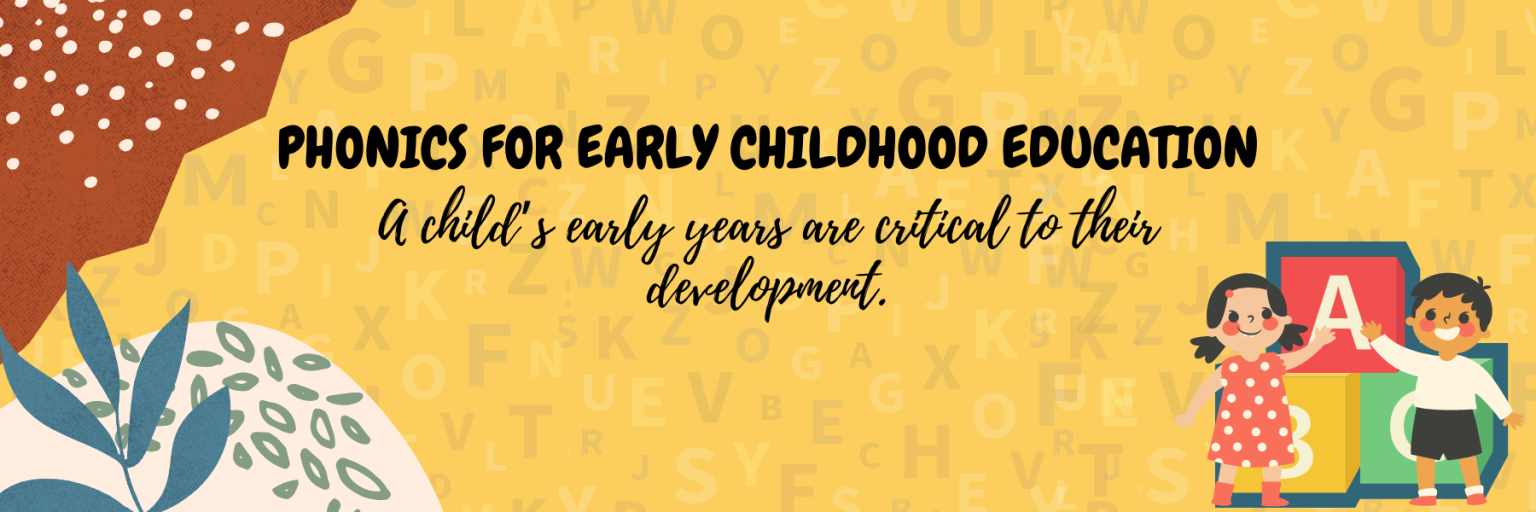
A child’s early years are critical to their development. At this stage, children begin to develop their social skills as they interact with their peers, teachers, and other parents. Children’s success depends on the foundation of early education, which acts as the cornerstone for their future development (Walden University, 2022). One of the essential skills is learning phonics; it is like a key to a door of written words. Using phonics skills, young children can “sound out” words.
The following are some of the strategies to use to teach phonics to young children
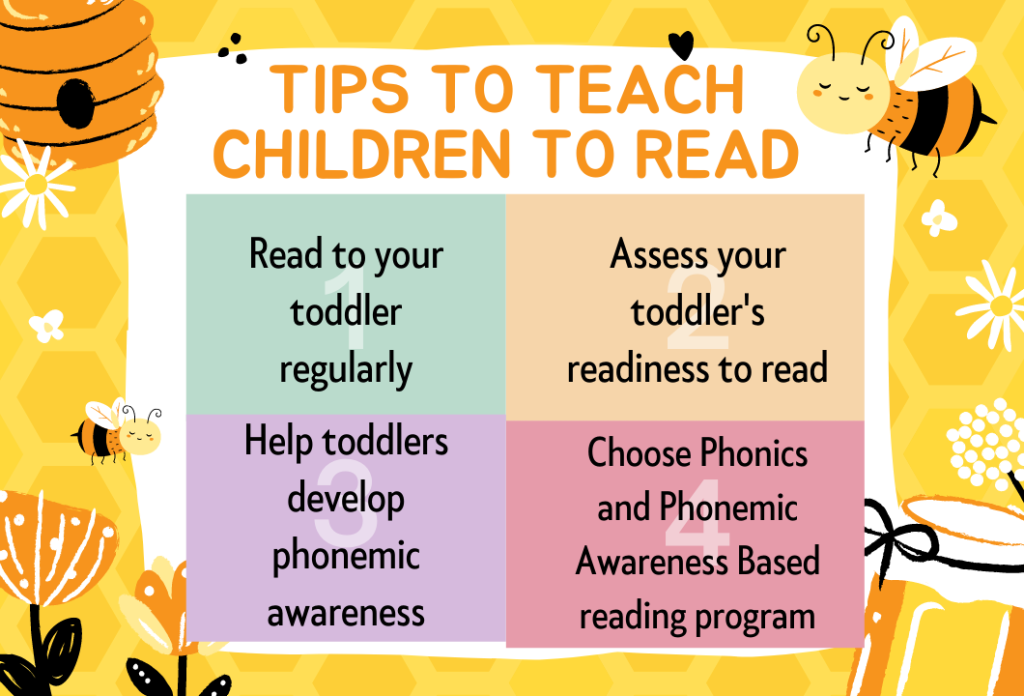
Strategy #1: Audio and Visual
Make a visual aid that represents the letters through different objects.
Strategy #2: Learn Specific sounds through Music
One of the best examples is the famous YouTube channel, Songs for Littles – Toddler Learning Videos. Ms. Rachel and her crew create a video that helps these young children familiarize themselves with the sounds of each alphabet letter. The combination of rhythm and action songs aids the children in making connections between sounds and letters in a simple, memorable, and energetic manner.
Strategy #3: Kids Playing with Movement and Sounds
Why do young children need to move, you may ask? Well, young children need to move to “activate” their brains. Hence, applying locomotion phonics to the child’s physical education class will help them retain information.
Strategy #4: Partner works
Phonics is not just practicing for these young children to familiarize themselves with the letter sounds. This journey will also help them hone their social skills, creating a learning environment where children study with their peers.
Now that we know what strategies are, as a parent, how do you teach phonics to your children? Well, continue to scroll as we will be discussing HOW TO TEACH PHONICS TO YOUR CHILDREN – in a creative way.
As parents, we want what is best for our kids, hence, searching for a fun and creative way to entertain and teach young children is very vital. Let’s get your kids excited about learning.
According to an article from VeryWell Family, these are the top 3 fun and creative way to teach phonics to young children.
Hunt Letters
Who wouldn’t want to hunt treasure of knowledge? As young children, it excites them if the activity requires their imagination to work. Therefore, creating a simple catalog using a used magazine and using a letter as a starting point, look for anything in a catalog or magazine that sounds like that letter.
Teach Phonics through Picture-Taking
Take your children into the “phonics adventure” as you hand them a camera and allow them to identify the images that lead them from point A to point B. Worried about the prize of the camera? A simple smartphone will do, or click this link for the list of affordable cameras to give to your children.
How to Make Your Children Learn to Read?
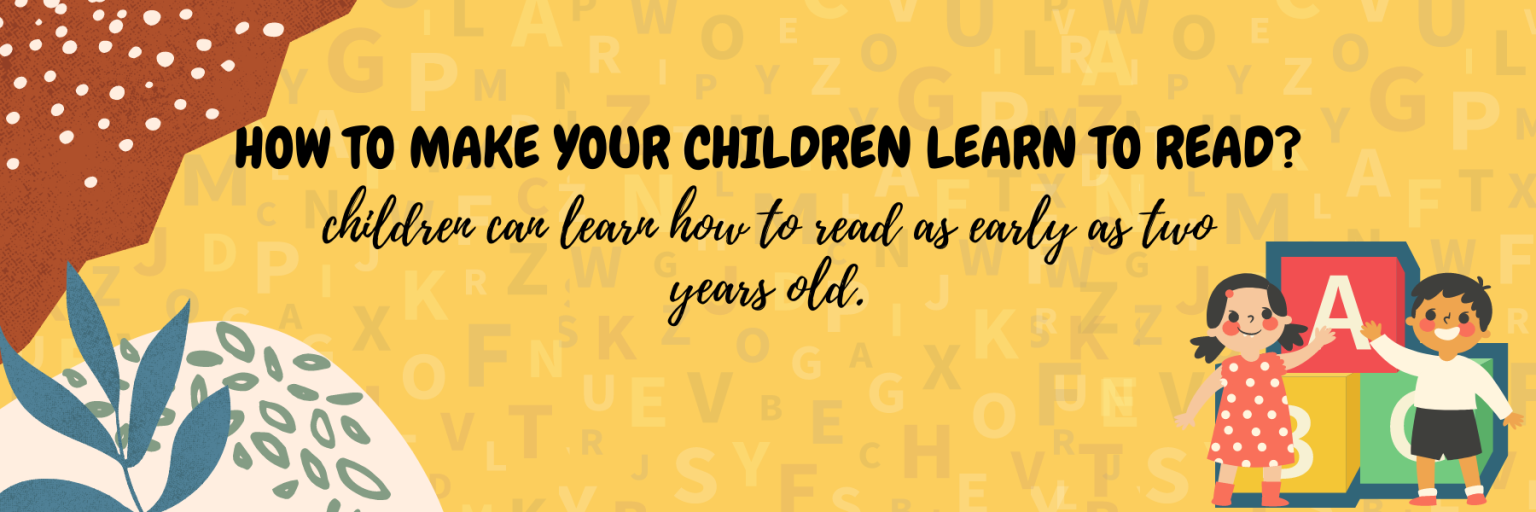
In general, did you know that you can teach your children how to read in just two weeks? Yes, you see it right! In just two weeks, your children will be a “start student” in their school by following these steps from Chad the Reading Teacher. He emphasizes that the best combination to teach your children is Synthetic Phonics and Phonemic Awareness – He also claimed that even if your children are three years old or YOUNGER, they could learn how to read through this. How awesome is that, right?
So, what do Phonemes mean? According to Chad, these are minor units of sounds in a language. Young children mostly associate each letter with a sound for them to remember it. Hence, combining the sounds of each letter in a word helps them read.
Moreover, English words are not designed to be taught through symbols and shapes. So, instead of teaching your child to memorize each term based on its shapes and object representation.
Teach your child to LEARN the FORTY-FOUR (44) sounds of English and combine these sounds with reading a particular word. You might ask, what are the forty-four sounds of English? These sounds are composed of 6 short vowels, five long vowels, 3 R-Controlled vowels, 5 Other vowels, one unstressed vowel, and 24 consonant sounds. Prepare your creativity as you create a visual aid and follow these English sounds.
Are you still in doubt? Let me elaborate on the steps to teach your children and make them bright by learning to read at an early age!
The first step is to learn to hear.
Might you be wondering? “Why is there a need for my child to learn how to hear?” Well, phonics is the sounds of each alphabet. Introduce to your children the relationship between letters and sound by watching phonics video tutorials, or creating it yourself. Also, engaging yourself in their journey to learn would be fun.
The next step will be to read it to your children.
Are you the type of parents who always read bedtime stories to their children? Great! Because you are one step ahead of our goal. According to “Simply Clarafying”, reading to your children is one fundamental basis to learn how to read. In continuation to the first step, your child needs to hear the proper nuances and vocabulary. Hence, schedule a time when you and your child will focus on reading.
Interesting, isn’t it? Please sit back and stay with us as we still have a few steps. Okay, our third step is to:
Immerse your child in Language.
Words and letters are everywhere; things we see every day may help your children be familiar with Language. Clara emphasized “pointing out” these words when on the road, grocery store, or anywhere. Grab this chance to tell them the letters in their names and the sounds they make. Build fun and creative learning environment for your children; you may use play-doh or draw letters in the sand and point out food labels and traffic signs. These are great ways to involve young children in Language and reading.
The fourth step, teach word families
a collection of words with a recurring pattern or trait. The prefixes and suffixes are frequently added to a joint base or root word. For example, prefixes such as IN, DIS, UN, AUTO, and suffixes such as ING, FUL, OR, and ED. Teaching these to your children will expose them to WORD RHYMING. According to Clara, rhyming is very important; hence, rhyme all the time!
The fifth step, teach double consonant word families.
Examples given are sand, hand, land, camp, and lamp. We are now on the “consonant blending” words are not just vowels + consonants. Some words (as stated in the example) have prefixes and suffixes of double consonants. So, it is essential to introduce these words to your children.
The last step is comprehension
Give meaning to the words you teach to your child, and talk about what these words mean. Answer the questions, what does this word mean, and what do these words are for? And can you put the word in a sentence? These questions will help you as a parent to know if your children understand what you were reading to them. Always discuss and talk.
Hooray! Now we know the steps in teaching your child how to read. o what are you waiting for? Grab all the resources mentioned in this article and start to teach your child in the most fun and exciting way. Remember that reading is a key to long-term success, it might be challenging at first, but the beginning is always challenging, drop whatever you are doing and start to plan on teaching reading to your child.
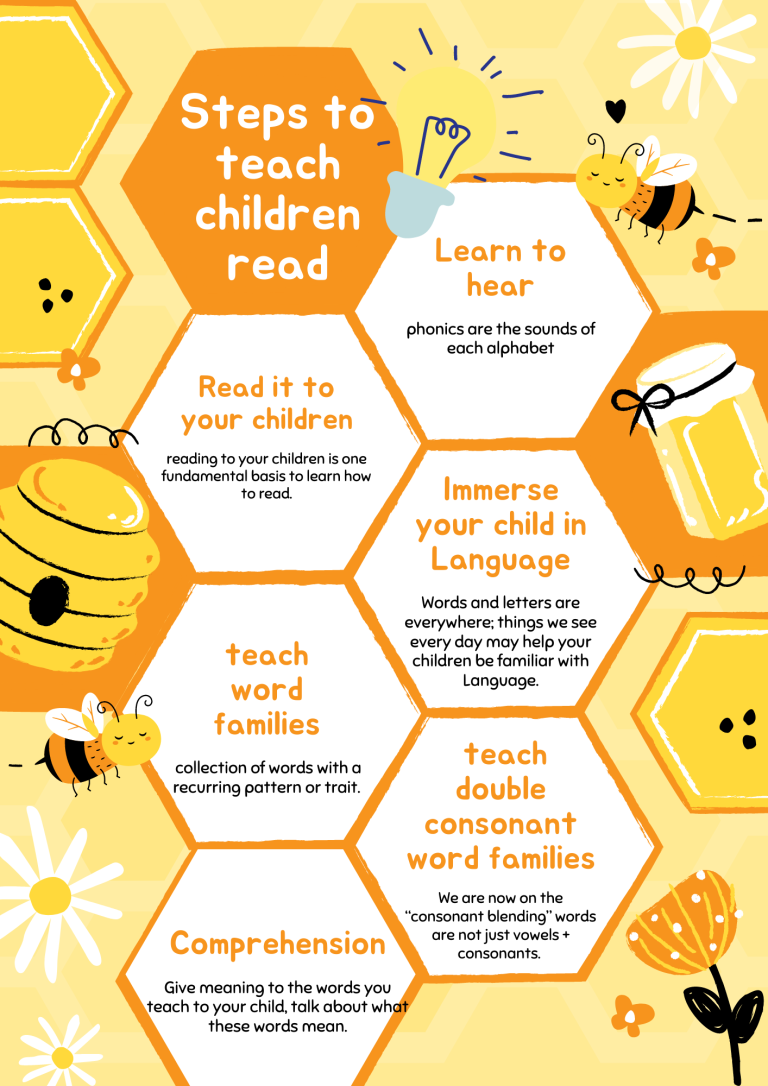
How to teach Children to Read: Introducing Phonics to a Two-Year-Old

To be more specific, let’s divide the age groups of early childhood. Children aged one to three years old are called toddlers. This is when they start to show curiosity, develop emotional and social skills, and even learn the letter and sounds associated with it.
You might be wondering how a parent can teach their two-year-old child phonics? Can a two-year-old be capable of learning how to read?
As a parent, we want the best things for our children. Some might plan to enroll their child to a phonics class, some might not. The point is being involved in the growth of your children is as important as for them to develop skills.

Fion, a mother of two years and 3 months old, gave different tips on how she was able to teach her child to read. Some of these are the following:
Read to your toddler regularly
We mentioned in this article that reading creates a bond between you and your child. Plus, this is a great way to get their interest in reading. Fion added that as we read with children, point to every word to show them that reading starts from left to right. Also, saying the sounds associated with each letter would be great.
Assess your toddler’s readiness to read
Remember to build a fun and interactive environment as you teach toddlers. Take one step at a time and check if your toddler shows any interest in learning how to read. If not, it’s okay to try again some other day or months. Bear in mind that not all children are the same, the progress that other toddlers have does not necessarily mean that other toddlers can also achieve that in the same way and time.
Help toddlers develop phonemic awareness and Choose Phonics and Phonemic Awareness Based reading programs.
Phonemic awareness was also discussed in this article. Phonics and Phonemic Awareness are both different, but both are vital in the child’s reading development. Fion mentioned that listening to phonics songs, singing a phonic song to her child, and giving him a phonics toy helps to develop phonic awareness. These might also help you and your toddlers too.
Additionally, there is one program that Fion repeatedly mentioned in her article. It is Children Learning Reading that focuses on phonics and phonic awareness reading program. It was developed by a father, Jim Yang. In this program they use scientifically proven methods such as Phonemic Awareness and Synthetic Phonics – which is by far the most effective method in teaching children how to read. This program sells 32 step-by-step phonics lessons, flashcards, printout lessons, MP3 audios, and many more.
There is no “magic” in a child’s development, it is all in the presence, effort, and nurture of children. If you search on the internet there are tons of ideas, crafts, and videos on how to teach your toddler. It is possible for a young age to learn to read phonetically as it is also possible that as a parent, we can be their first phonics teacher.
How to teach children to Read: Introducing Phonics to a Four-Year-Old at home
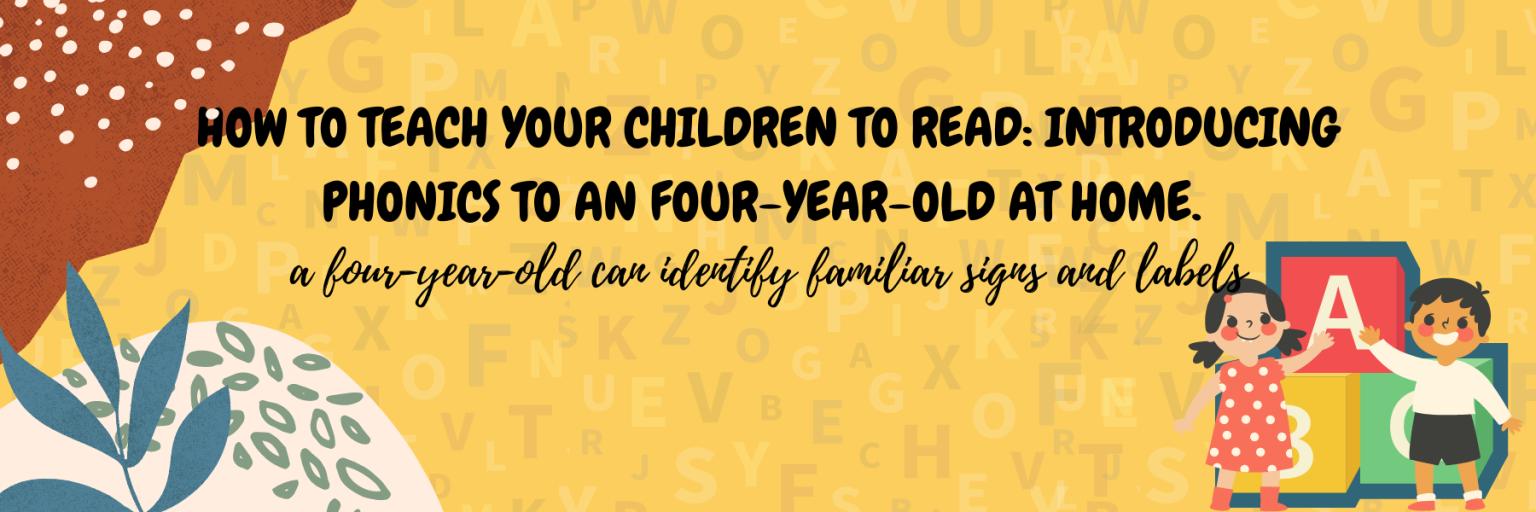
According to Kids Health, a four-year-old can identify familiar signs and labels. Can recite some letters in the alphabet and identify the letters used in their names. It does not necessarily mean that a four-year-olds can read on their own, they still need guidance from you their parents.
Erica Loop wrote an article about teaching a four-year-old how to read. These are some of the tips she mentioned:
Help your children memorize the alphabet.
It can be through singing alphabet songs and writing these letters on a piece of paper.
Read age-appropriate books such as Dr. Seuss
Read this book to your child repeatedly, and make sure that they are also involved in the process.
Writing
According to Lifesavvy, people remember things better when they write them down. In the same case with young children, try to give them an alphabet tracing book, encourage them to trace every letter, and recite phonic sounds on each letter.
Be involved
Assess if they are interested and encourage your child to learn. Erica Loop mentioned not to use “baby talk” when talking to your child.
Now, let’s step to a whole new different level of teaching children. This way is known as Montessori – an approach to learning that is comprehensive, self-paced, and experiential.
In the Montessori way, you offer an opportunity to your child to learn on their own. Ops! It does not mean that you leave them in one place giving books and letting them figure out how to read words. You are on their side to guide them. In this sense, do not pressure your child to learn, let them have their own pace of learning. Lisa Adele, in her article, mentioned that there are four steps in teaching phonics.
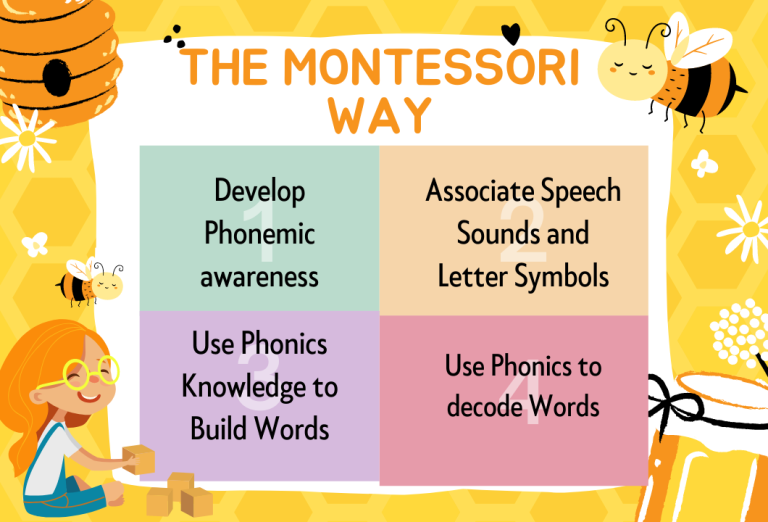
Ready to dig in? Provided below are the four step-by-steps to teach phonics through the Montessori approach.
Develop Phonemic awareness
similar to what we talked about on the previous page of this article, it is important to focus on getting the attention of your child to individual speech, through this way, children will be familiar with the sounds of each letter in a word.
Associate Speech Sounds and Letter Symbols
Help your child create a connection to the speech sounds. Aim to your four-year-old child to recognize at least the sound of the first letter in a word.
Use Phonics Knowledge to Build Words
To teach phonics, use a Montessori moveable alphabet to show your kid how to arrange speech sounds – represented by letter symbols in a row to form words.
Use Phonics to decode Words
children can now possess a decoding skill of words, this can still hone through repeatedly reading words, phrases, then sentences.
In this article, we gave you two different approaches that you could apply in teaching your four-year-old child. It can be hard at first, but as you start planning, you and your child get there.
What are the 44 Phonics/English Sounds?
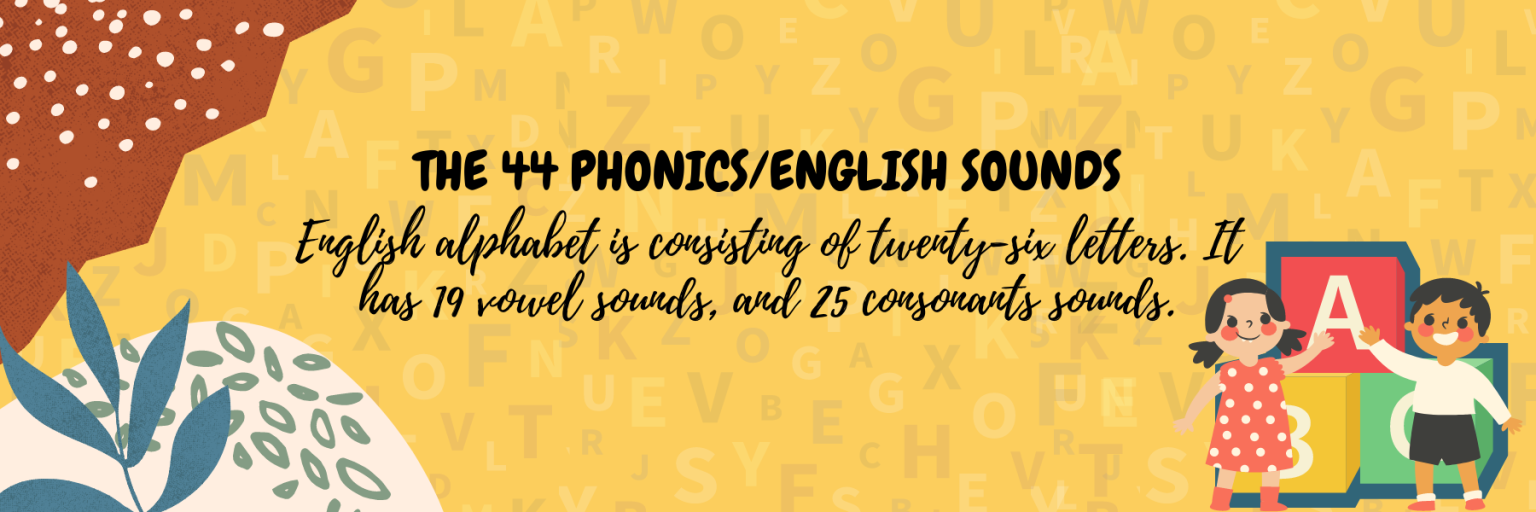
Remember what we talked about in the previous article? Learning to hear English or phonics sound is vital for young children to learn how to read. So, let’s have an in-depth discussion about what are the 44 Phonics Sounds.
The English alphabet is consisting of twenty-six letters. It has 19 vowel sounds, and 25 consonant sounds.
Let’s start with the 19 vowel sounds. It is divided into three parts:
-
- Five short Vowel Sounds, which are the a, e, I, o, and u.
- Six long vowel sounds, the a,e, I,o,u, and oo.
- R-Controlled Vowel Sounds, which are the ar, er, and or.
The 18 consonants on the other hand are b, k, d, f, g, h, j, k, l, m, n, p, q, r, s, t, v, w, x, y, z. The following are the example:
-
- B for ball and bat
- K for Kite and cat
- D for dog
There are also what you call the blends. This is the combination of two or more letters to form a consonant sound. Some of the letters that belong to the blends are, BL, CL, FL, GL, and BR. To give an example;
-
- BL for blow and blue
- CL for clip and close
- FL for fly and fled
- GL for glad and glow
- BR for brew and brown
Still, enjoying learning what English sounds like? We will also talk about the Seven Digrap Sounds – according to ThoughtCo, Digraph are consonants combined to create a unique sound that is completely separate from the sounds of each individual letter. So, what are the examples of this?
-
- Ch for chin and chat
- Sh for shout or push
- Th for a thing or thanks
- Wh for when or what
- Ng for ring and rang
- Nk for rank and drank
To complete our list of 44 English sounds, the diphthongs and other special sounds The sound of the first vowel gliding into the second creates a new syllable in the shape of this digraph, which is simply a digraph that incorporates vowels. It’s common for them to be located in the midst of a word. See the samples in the following bullets.
-
- Oi can be used for oil or toy
- Ow for ouch
- EY for rain, gain, and pain
- Short OO for pool
- Aw for raw
- ZH for mission
Now that we already know the 44 English sounds, go grab the materials that you needed, practice pronouncing these phonics and start to teach your children. Good luck!
How does phonics differ from phonemic awareness?
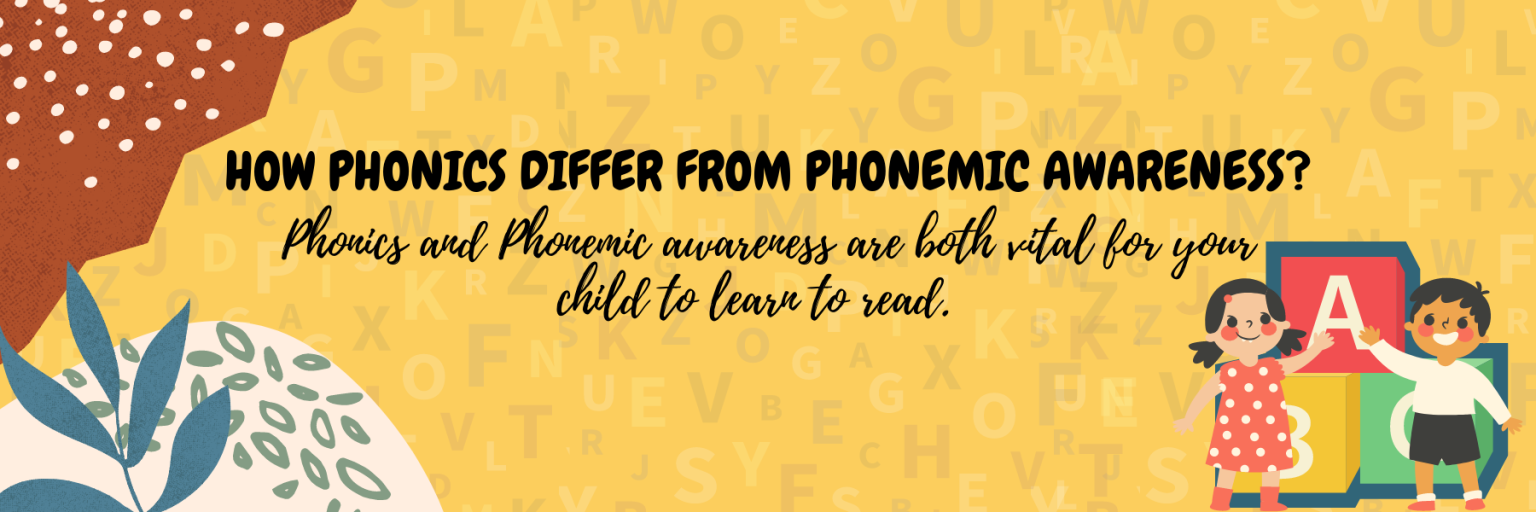
In this article, Phonics and Phonemic Awareness are always mentioned. So, what do these words mean? And how do these differ from each other?
Here’s the thing Phonics and Phonemic awareness are both vital for your child to learn to read.
Phonics and Phonemic Awareness differ in how they convey their functions.
Let’s talk about Phonological Awareness first, according to Institute for Multi-Sensory Education It is being aware of the fact that our spoken language is composed of words and that our words are composed of distinct units of sound known as phonemes.
Several skills were introduced, which is important for early childhood education. It teaches the child word recognition, rhyming, and syllables per word.
We will not sugar-coat it, teaching phonemic awareness can be challenging. As stated in the Strategies to make your children learn to read a faster section of this article, a child needs to be familiarized with 44 English sounds, let us also add the 26 alphabets and 250 spelling of each English sound.
Phonemic awareness should be taught thoroughly to your children.
But worry no more as we included several steps to teach your children how to read and that includes learning phonemic awareness (see the article above).
Moving on, how does phonemic awareness differ from phonics?
Phonics involves the relationship between letters, words, and their sounds. Children can decode or read the words by sounding each syllable.
Phonemic Awareness is somehow similar but not the same.
Phonemic focuses on the sounds, while Phonics focuses on letters, words, and associated sounds on each word.
Phonemic Awareness is like a foundation before teaching phonics, that is why both of these are important for young children to learn.
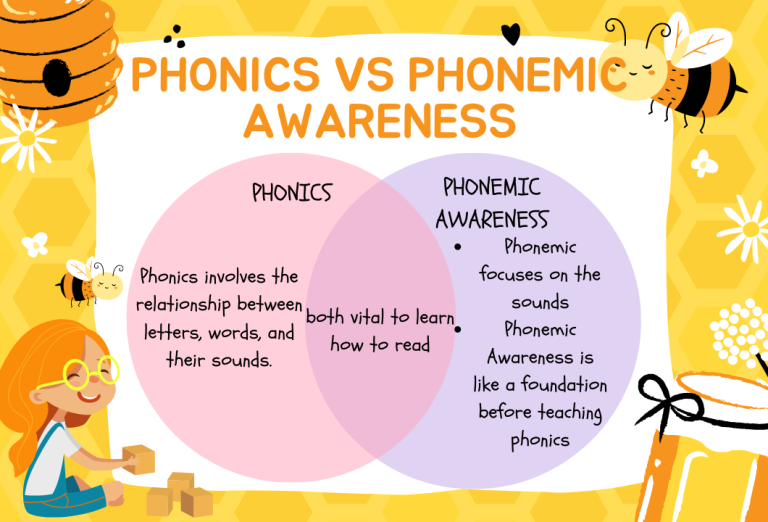
How can I Teach Phonics Online?

Due to the pandemic, we have to keep kids at home. As this article emphasizes how important it is to build a basic reading foundation for young children, even though we have to stay at our house, we also need to teach children basic phonics. But how can we teach phonics online?
Worry no more as we will discuss in this article some of the ONLINE PHONICS PROGRAMs that you could avail while we are making sure that our children are safe from COVID-19.
First on our list is Starfall ABCs, it is a website which covers everything from alphabet, phonics, identifying shapes of words, and fluency and comprehension. Good news is, you can use this for FREE! Yes, there is no monthly fee for using this website. Children will enjoy learning through this as it is also interactive and entertaining.
Next on our list is HOMER Learn and Grow, it can be downloaded both in mobile phones or computers (you just need to install an emulator on your pc).
HOMER includes teaching several skills, such as Thinking skills, creativity, math, social-emotional, and reading. All the lessons are personalized based on the interest and age of children who will use the application.
Their reading section is composed of alphabets, and phonics. And there are a lot more features that make this application interactive and fun.
Third and last on the list is Teach your Monster to Read, which offers a free reading game for young children.
This website has three different parts:
Teach your Monster to Read – Where you and your child could create a player, you can also create cute avatars such as this:
Children could change the monster’s arms, head, legs, and even their colors. This is based on their own preference, how cool is that? Also, this application also has a mini story line which children will really enjoy.
Teach your monster Reading for Fun – In this part the narrator will instruct you to read the following words with him. This will help children to learn how to read faster.
Teach your Monster Number Skills – In the last part of Teach your Monster, here your children can learn about numbers in the most interactive way. Teach Your Monster Application is not just focused on the ABCs and Phonics, they also promote learning numbers through a game approach.
These applications are all free and accessible through computers or mobile phones. Teaching phonics can be really challenging, but the help of these applications and exerting effort to engage your children in learning will make it easier. You got this, parents!
Conclusion
The following is the summary of all the articles stated above. These are the main points that should be remembered. For a thorough explanation, kindly navigate to the articles above.
-
- Phonics is a method of teaching to read and correlating the sounds with letters or even a group of letters; Phonological Awareness means being able to recognize words, a rhyme, or counting of syllables in a word; Phonemical Awareness means the ability in recognizing the sounds in spoken words, the blending, and counting the number of sounds in a word.
-
- It is vital for the child’s development stage to be observed and nurtured hand-on by their parents. It helps to improve a family bond, trust, and better results for their learning.
-
- Basic foundations such as teaching young children phonemes are vital for them to learn how to read.
-
- There are six types of phonics. These are; Synthetic, Analytic, Analogy, Embedded, On-Set Rime, and Phonics through Spelling.
-
- Lesson plans are important in order to teach phonics to children. Anyone can teach phonics as long as they have enough knowledge and materials.
-
- Young Children even three-year-old or younger can learn how to read with the proper guidance from their parents.
-
- The development of a two-year-old differs from the development of a four-year-old hence they both need a different approach to teaching phonics.
-
- A two-year-old can learn how to read phonics, however, there are steps to achieve this.
-
- A four-year-old can also learn how to read and one of the best steps is to make them trace or write letters.
-
- Phonics and Phonemic Awareness are both different. Phonics is associating the words, and letters, with their sounds, however, phonemic awareness focuses on the sounds.
-
- There are a lot of phonics programs to choose from for the pre-reading skills of young children. There are also existing applications that can be used to have interactive and fun phonics lessons.
Overall, the involvement of parents and teachers is important in the development of a child. As a parent, being involved in the needs of your children will unlock their willingness to learn. And as Maria Montessori says “The goal of Early Childhood Education should be activated to the child’s own desire to learn.” So, let’s get this interactive and fun learning journey for our young children started!
